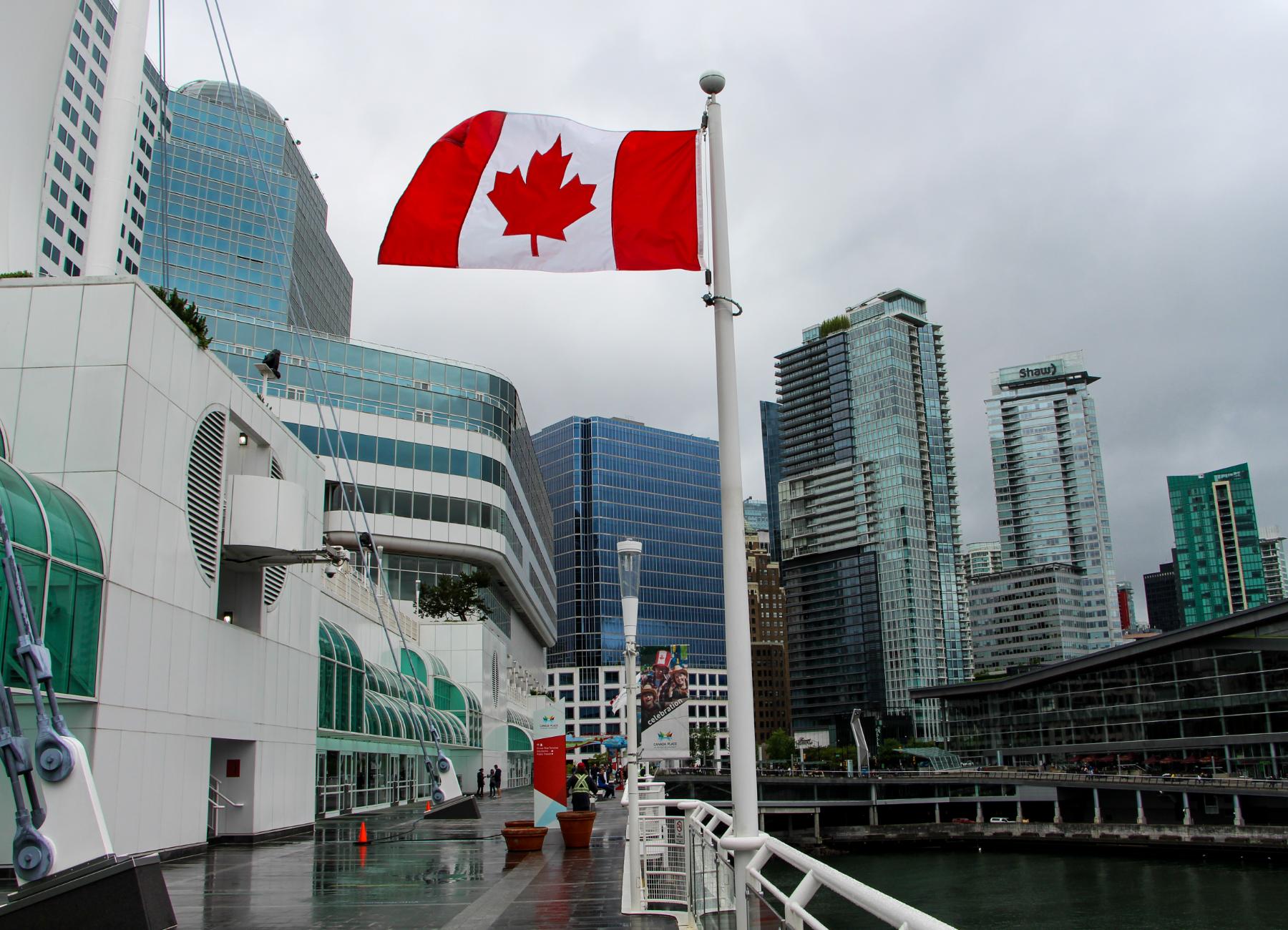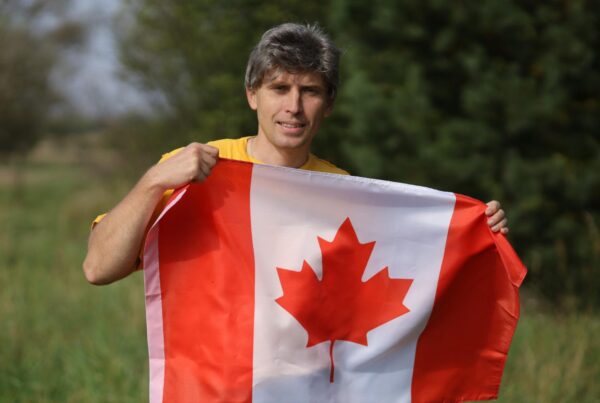Canadian permanent resident targets dropped to 395,000 for 2025 after the government cut previous projections. The new target is 105,000 lower than earlier projected levels for 2025. Our experience as immigration lawyers shows this marks a big change from Canada’s previous direction.
The first half of 2025 welcomed 207,650 new permanent residents. This number is lower than the 255,950 people admitted in the same period of 2024 and 263,425 in 2023. Canada might still reach around 415,000 newcomers by year-end at the current pace, which would exceed its official plan. The 2025-2027 Immigration Levels Plan shows more cuts ahead with targets of 380,000 in 2026 and 365,000 in 2027.
The government’s new strategy expects that more than 40% of predicted permanent resident admissions in 2025 will come from temporary residents already living in Canada. Economic immigration remains a priority and will make up about 62% of total permanent resident admissions by 2027. This plan aims to reduce Canada’s housing supply gap by about 670,000 units through 2027, which tackles one of the country’s biggest challenges.
Canada reduces permanent resident target to 395,000 for 2025
 PM Justin Trudeau’s government announced a big change to Canada’s immigration policy in October 2024. The new plan reduces permanent resident targets to 395,000 for 2025. This means a 21% drop from the original target of 500,000 – one of the biggest changes to Canada’s immigration strategy in recent memory. The government plans to cut these numbers even further to 380,000 in 2026 and 365,000 in 2027.
PM Justin Trudeau’s government announced a big change to Canada’s immigration policy in October 2024. The new plan reduces permanent resident targets to 395,000 for 2025. This means a 21% drop from the original target of 500,000 – one of the biggest changes to Canada’s immigration strategy in recent memory. The government plans to cut these numbers even further to 380,000 in 2026 and 365,000 in 2027.
Why the 2025 target marks a shift from previous years
This reduction shows a complete turnaround from Trudeau’s previous immigration approach. The Liberal government started with annual permanent resident targets of about 272,000 when they took office in 2015. These numbers kept growing over the last several years. The biggest jump happened in 2021 right after the COVID-19 pandemic. The target reached 465,000 by 2023 and grew to 485,000 for 2024. The original plan wanted to welcome 500,000 permanent residents each year starting in 2025.
Canada’s immigration targets now look more like pre-pandemic numbers. PM Trudeau admitted his team “didn’t get the balance quite right” when they boosted immigration after the pandemic to fix labor shortages. This shows they now understand the challenges that come with rapid population growth, especially with housing and social services.
How the new target compares to 2024 and 2023 levels
The new permanent resident numbers for 2025 show a major decrease compared to recent years:
- 2023 target: 465,000 permanent residents
- 2024 target: 485,000 permanent residents
- Original 2025 target: 500,000 permanent residents
- Revised 2025 target: 395,000 permanent residents
The new plan reduces permanent resident admissions by 105,000 compared to the original 2025 target. Q1 2025 welcomed about 96,800 new permanent residents, which lines up with these lower targets. The population now grows at just 0.8% per quarter (seasonally adjusted) – nowhere near the rate we saw in the past two years.
What the government wants to achieve with this reduction
Immigration Minister Marc Miller says these cuts will “right-size population growth after the post-pandemic surge”. The population might drop slightly by 0.2% in both 2025 and 2026, before growing again at 0.8% in 2027.
On top of that, the government wants to line up temporary and permanent resident numbers with what communities can handle. They want to cut temporary residents to 5% of Canada’s total population by late 2026. Statistics Canada says over 3 million non-permanent residents lived here in Q1 2025, with almost 1 million being international students. This makes temporary residents about 7.25% of Canada’s 41.5 million population.
Lower immigration numbers should ease pressure on the housing market. The housing supply gap should shrink by about 670,000 units by 2027’s end. The plan also tackles rising unemployment, which sits at 6.5% nationally and tops 14% for young Canadians.
Economic immigration stays a priority, making up nearly 62% of all admissions by 2027. More than that, 40% of new permanent residents in 2025 will be students or workers already in Canada. This supports what the government calls its “in-Canada focus”.
IRCC prioritizes in-Canada applicants for permanent residency
Immigration, Refugees and Citizenship Canada (IRCC) has changed its priorities for 2025. The focus now lies on applicants who already live in Canada. Official announcements reveal that students and workers currently in Canada will make up more than 40% of permanent resident admissions in 2025. Canada’s immigration strategy now looks completely different. The Federal High Skilled segment splits into two categories: Federal Economic Priorities with a target of 41,700 and In-Canada Focus targeting 82,980 spots—this is a big deal as it means that the allocation has doubled.

Who qualifies under the in-Canada focus
The In-Canada Focus category targets temporary residents who have built their lives in Canada. You need to meet these requirements:
- Have valid temporary resident status in Canada
- Show Canadian work experience in skilled occupations
- Pass language tests in English or French
- Have qualifying educational credentials
The Canadian Experience Class (CEC) remains the life-blood program for temporary workers who have Canadian work experience. Express Entry has seen major changes since March 2025 to line up with IRCC’s in-Canada focus. Points for arranged employment no longer exist. Canadian experience now carries more weight in the Complete Ranking System.
Why workers and students already in Canada are being prioritized
IRCC has several reasons behind this approach. The largest longitudinal study showed that newcomers with Canadian experience succeed better in the long run. These people keep supporting the workforce and economy. They don’t need extra social services because they’re already part of Canadian communities.
The government wants to reduce Canada’s temporary resident population from 7.4% in October 2024 to 5% by 2026. This strategy helps people move from temporary to permanent status. The government can manage immigration numbers better while keeping skilled workers in Canada.
On top of that, IRCC selects economic immigrants based on sectors that need workers badly. Healthcare, construction, and education top the list. This helps match permanent residents’ skills with labor market gaps.
How this change affects new overseas applicants
New applicants from outside Canada face bigger hurdles now. The numbers tell the story – in-Canada applicants get 82,980 spots while economic priorities get 41,700. Overseas applicants must either have skills in high-demand jobs or look at other ways to immigrate.
Express Entry draws in 2025 will mostly pick candidates from the Canadian Experience Class. Overseas candidates without Canadian experience will compete harder for fewer spots. Industries that Express Entry used to target—like STEM and agriculture—might need to use Provincial Nominee Programs or employer-specific permits instead.
Notwithstanding that, IRCC launched new pilot programs in 2025. Two programs focus on home care workers, and the Rural and Northern Immigration Pilot (RNIP) gives overseas applicants in specific sectors new options.
Provinces adjust to reduced PNP allocations
The Provincial Nominee Program (PNP) has seen radical changes as Canada’s immigration targets moved down in 2025. The federal government cut provincial nomination allocations by 50% across the board. These cuts changed how provinces run their economic immigration programs. The 2025-2027 Immigration Levels Plan reduced overall PNP landings from 110,000 in 2024 to 55,000 for 2025.
Which provinces negotiated for more nomination spaces
Several provinces successfully pushed back against these major cuts. Newfoundland and Labrador led the way and got an extra 1,000 nomination spaces in February 2025. This boost brought its PNP allocation close to 2024 levels. The province started with just 1,050 spaces, down from 2,100 in 2024, but won this increase while keeping its 475 Atlantic Immigration Program spaces.
New Brunswick secured an additional 1,500 PNP spaces through talks, which brought its total provincial nomination capacity to 4,250 for 2025. British Columbia also got 1,254 more nominations from the federal government. These increases were great wins in an otherwise tight immigration environment.
Ontario, Canada’s biggest immigration destination, saw its numbers cut in half from 21,500 in 2024 to 10,750 for 2025. The Ontario Immigrant Nominee Program (OINP) has warned clients about longer processing times because of these reduced numbers.
How eligibility criteria and streams have changed
Provincial programs have tightened their eligibility rules because of smaller allocations. British Columbia now limits its Health Authority stream to roles that directly support healthcare services. The focus is now only on doctors, nurses, and allied health professionals. The province also narrowed its childcare focus to Early Childhood Educators and removed Early Childhood Educator Assistants from targeted draws.
Ontario made regulatory changes on July 1, 2025, to better match labor market needs. The province launched a new electronic Employer Portal that turned Employer Job Offer streams into an employer-driven application process. This change helps OINP tackle credibility issues with certain applications and focus on quality candidates.
What sectors are being prioritized in provincial programs
Provinces now focus their nominations on key sectors with worker shortages. Healthcare stands out as the top priority—Ontario nominated more than 3,200 healthcare workers in 2024, about 15% of all nominations. This includes pharmacists, registered nurses, nurse aides, and physicians.
Other key sectors include:
- Construction – British Columbia gives priority to certified workers in construction jobs
- Technology – The BC PNP has helped more than 6,000 tech workers get permanent residence since 2017
- Childcare – Many provinces list this as a critical need
- Education – New Brunswick targets teachers and early childhood educators
These focused approaches show how provinces make the most of limited nomination spaces while addressing their crucial workforce needs.
Express Entry and category-based selection undergo major changes
Express Entry, Canada’s flagship immigration system, went through big changes in 2025. These changes were part of the government’s broader adjustment of Canadian permanent resident targets. The removal of arranged employment points and restructuring of category-based selection draws were the most important modifications. IRCC changed its focus to prioritize in-Canada applicants.
Why arranged employment points were removed
IRCC eliminated Comprehensive Ranking System (CRS) points for arranged employment on March 25, 2025. Before this change, Express Entry candidates got 50 points for job offers in skilled occupations. Senior management positions earned 200 points. Minister Marc Miller called this a temporary measure. The goal was to reduce fraud by removing incentives to illegally purchase Labor Market Impact Assessments (LMIAs). This change helped candidates without job offers. Their ranking improved once arranged employment points disappeared from other candidates’ profiles. Job offers still matter for eligibility in programs like Federal Skilled Trades. They just don’t give extra points anymore.
What new categories were added or removed in 2025
IRCC adjusted category-based selection in February 2025. They added “Education” as a new category with five eligible occupations. The “Transportation” category disappeared completely. Other categories saw major changes. Healthcare grew to include social services jobs. The Agriculture and Agri-food category now has just one NOC code. The government picked four priority categories for 2025:
- French-language proficiency
- Healthcare and social services occupations
- Trades occupations
- Education occupations
STEM occupations lost their priority status, though they were included in previous years.
How these changes affect Canadian permanent residency applicants
These modifications changed the path to Canadian permanent residency. Candidates who relied on arranged employment points saw their CRS scores drop by 50-200 points. Many fell below invitation thresholds. IRCC announced that 2025 federal economic class draws would focus on Canadian Experience Class (CEC) applicants. This reflects the government’s preference for people already in Canada. Candidates without Canadian work experience now find it harder to get invitations through Express Entry. Category-based selection draws usually need fewer CRS points than general draws. Recent healthcare occupation draws needed 475 points, while CEC draws required 534. This creates strategic advantages for applicants in priority sectors.
New PR pathways and temporary policy extensions reshape access
Canada has not only reduced its permanent residency targets but also created new pathways and extended temporary policies through 2025. These changes have transformed how specific groups can access Canadian permanent residency as part of broader system updates.
What new pilots were launched in 2025
Canada will create a permanent immigration pathway that builds on the Economic Mobility Pathways Pilot before it ends in December 2025. Home care workers will now have access to two new Enhanced Caregiver Pilot Programs that grant permanent residency right when they arrive. The government launched Rural Community Immigration Pilot and Francophone Community Immigration Pilot programs to help smaller communities that don’t have enough workers. The country aims to welcome 10,920 immigrants through these pilot programs in 2025.
How temporary policies support Ukrainians, Iranians, and others
Ukrainians currently in Canada under CUAET measures can now apply for open work permits until March 31, 2026. Their path to permanent residence closed in October 2024. Iranian nationals who have temporary resident status and arrived before February 28, 2025, can apply for work permits until February 2026. Quebec alone had nearly 11,000 Iranians with open work permits by late 2024.
Why some programs hit their caps on day one
People’s interest in specialized programs often exceeds available spots quickly. The Agri-Food Pilot works differently from invitation-based programs and processes applications as they come in. It now accepts only 1,010 applications for 2025, down from its previous limit of 2,750. This smaller number reflects how immigration target cuts affect specialized pathways across Canada.
Canadian Immigration Lawyers Can Help You
Canada’s immigration scene has changed drastically with permanent resident targets dropping to 395,000 for 2025. This 21% decrease from the planned 500,000 target shows a complete rethinking of Canada’s population growth strategy. Our experience as immigration lawyers shows the government trying to strike a balance between economic needs and the country’s infrastructure capacity, especially when it comes to housing and social services.
The numbers will keep declining through 2027, which points to a long-term strategy rather than a quick fix. Economic immigration remains the life-blood of Canada’s approach and will still make up about 62% of all admissions by 2027. The country’s ongoing need for skilled workers drives this focus, even with the overall reductions.
These changes bring both challenges and opportunities to future immigrants. Temporary residents already in Canadian communities now have a clear advantage as priorities move toward in-Canada applicants. The path has become tighter for overseas applicants, particularly those outside healthcare and construction sectors. Provincial programs have adjusted to smaller PNP allocations by making eligibility requirements stricter and focusing nominations on critical workforce gaps.
The government has launched several targeted pathways to address specific needs, despite lower overall numbers. New pilot programs for home care workers and rural communities might offer alternatives to candidates affected by broader restrictions. The Express Entry scoring system no longer includes arranged employment points, which forces many future immigrants to rethink their permanent residency strategy.
Time will tell if these changes help address Canada’s domestic challenges while supporting immigration-driven economic growth. Canada’s immigration system remains one of the most reliable globally, welcoming hundreds of thousands each year, despite reduced targets. Future immigrants must keep up with these evolving policies and adapt their plans to direct their path through this new immigration reality.
Key Takeaways
Canada’s immigration landscape has undergone a dramatic transformation with significant reductions in permanent resident targets and strategic policy shifts that will reshape pathways to Canadian residency through 2027.
• Canada slashed its 2025 permanent resident target to 395,000, a 21% reduction from the original 500,000 plan, with further cuts to 365,000 by 2027.
• Over 40% of new permanent residents in 2025 will come from temporary residents already in Canada, prioritizing workers and students with Canadian experience.
• Provincial Nominee Program allocations were cut by 50%, forcing provinces to tighten eligibility criteria and focus on critical sectors like healthcare and construction.
• Express Entry eliminated arranged employment points and restructured category-based selection, making Canadian work experience more valuable than overseas job offers.
• Despite overall reductions, new pilot programs for home care workers and rural communities offer alternative pathways for specific demographics and skill sets.
This strategic shift represents Canada’s attempt to balance economic immigration needs with housing capacity and social services, while maintaining its position as a leading immigration destination globally. Prospective immigrants must now adapt their strategies to navigate these new realities and explore targeted pathways that align with Canada’s evolving priorities.








